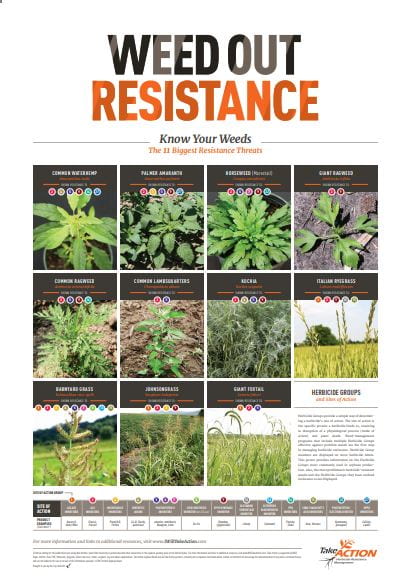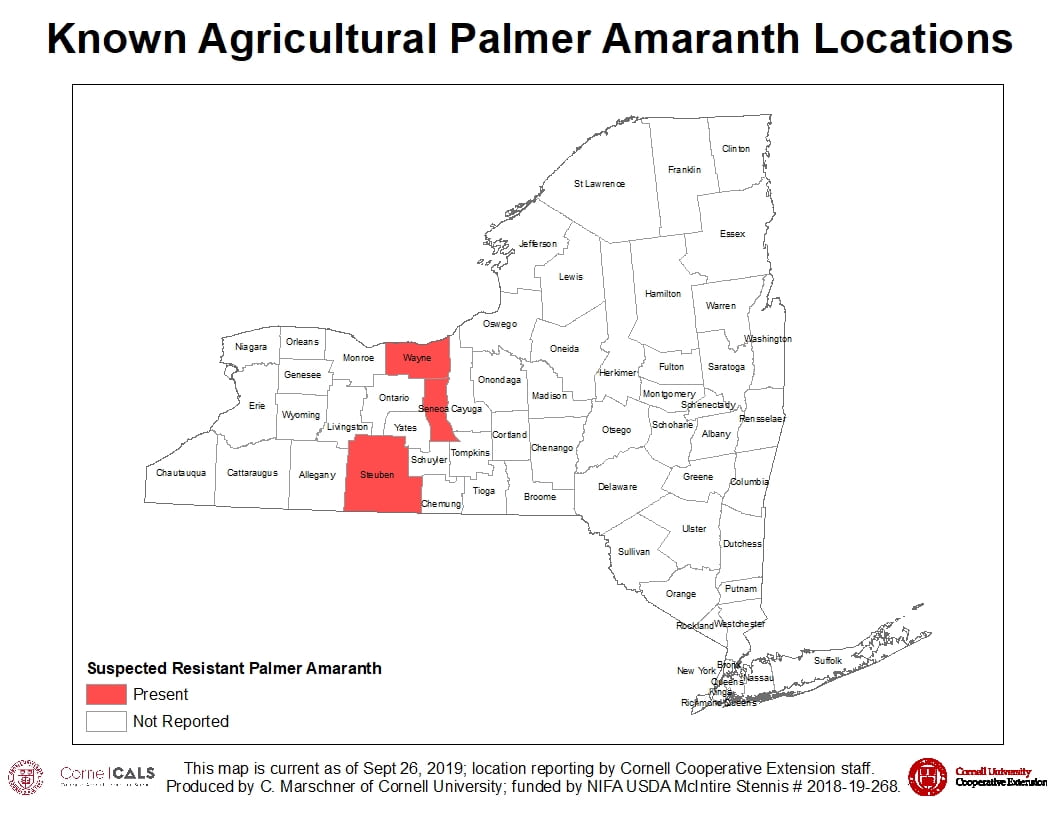New York farmers grow a wide range of crops, from corn and soybeans to apples and hops to specialty vegetables for our large urban markets. Each crop has a suite of problem weeds and ways that new weeds can arrive on the farm. Once in New York, those new weeds can spread from one farm to the next, and from one crop type to the next.
Herbicide resistant weed populations are spreading in agriculture, and New York is no exception. The latest additions to our list of known herbicide resistant weeds are water hemp and our first known location of Palmer amaranth in New York (Ontario county). Understanding how to identify herbicide resistant crops in the field and what’s in New York helps growers pick the most effective weed management practices for their farm.
The four herbicide resistant weeds currently confirmed in New York are atrazine-resistant (Mode of Action 5) common ragweed, common lambsquarters, smooth pigweed, and common groundsel. Herbicide resistance testing is currently underway for waterhemp and Palmer amaranth found in New York. Herbicide resistant marestail/horseweed has been identified, but is not yet added to the official list.
Take Action’s “Weed Out Resistance” poster features the most common herbicide resistant weeds, and the known modes of action to which they are resistant and a helpful reminder of which mode of action is which along the bottom.
Tall Waterhemp is an herbicide resistant import from the Midwest that is spreading in central New York, primarily in field crop fields. See the map to the right for its current known distribution.
Palmer amaranth has been confirmed in two New York counties as of 2019. Both of these records were from agricultural machinery purchased in the Midwest. This is a weed that has a long germination window, very high seed production, and multiple herbicide resistance. See the map to the right for known locations of this weed, and keep an eye out for it in your area.



